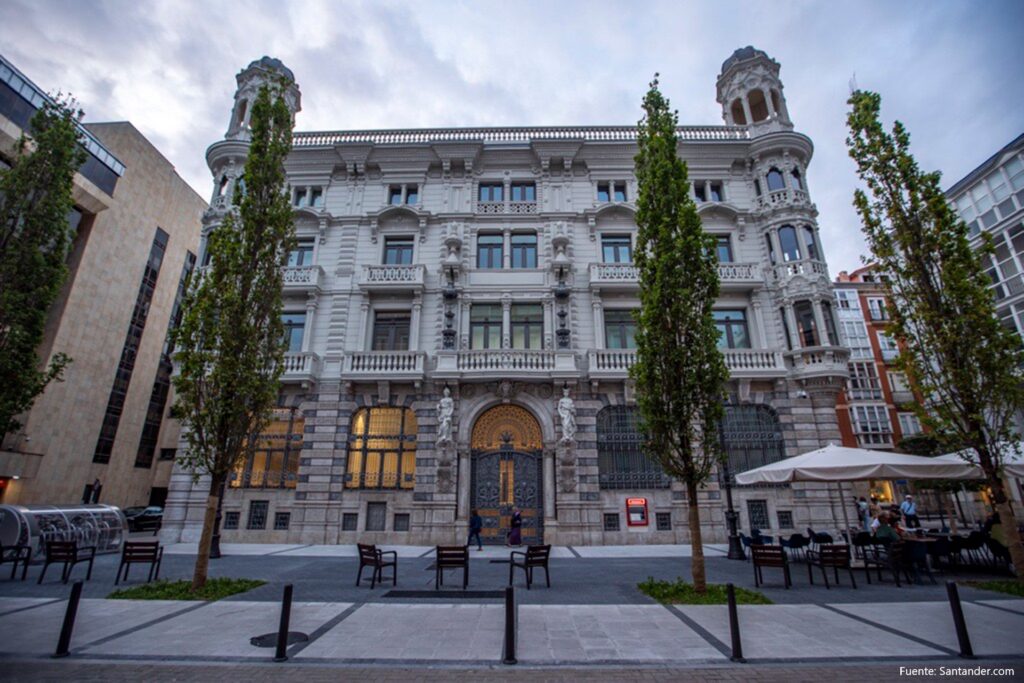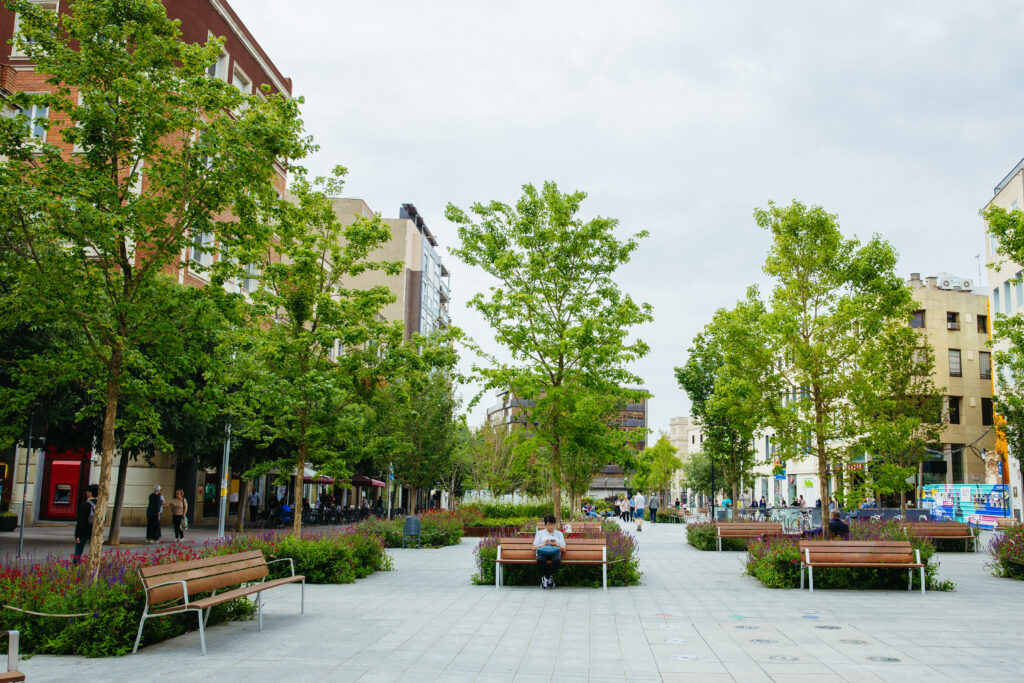The Great Belt – Denmark
The Great Belt (Storebælt) strait, lying between the major Danish islands of Zealand and Funen effectively divide Denmark in two. For decades the two islands were joined by a ferry service, but in 1986, work started on a fixed link between the city of Nyborg and town of KorsØr, which was the largest construction project in Danish history.
Milford P/S, the distributor for GreenBlue Urban products in Scandinavia working with various professionals, designed sustainable urban drainage schemes for both towns using GreenBlue Urban Arborflow products.
Nyborg
One of the oldest cities in Denmark, Nyborg has been inhabited since the Viking times: the first time it was mentioned in the history of Denmark was in 1193, and Nyborg castle still exists today – although partially ruined in the Dano-Swedish war which finished in 1660.
Nyborg became an important port and city, being for a time the seat of the king and thus acting as the capital of Denmark for those years. In 1828, the ferries began to sail from the port, the town thrived again, with annual markets and the economy and population grew. The current population is approximately 17,300 – almost double what it was 100 years ago.
Much of the city is low lying, with most of it less than 10m above sea level, making stormwater management a challenge. Managing surface water in any urban areas can be problematic, and additionally so when potential pollutant issues arise. When a new recycling plant was planned in Nyborg, concern was raised as to how to manage the runoff and pollutant loading in the event of a one in a two-year storm event, and the client Nyborg Forsyning & Service A/S called on Milford P/S to assist with a design of a sustainable drainage system capable of dealing with both water quantity and quality issues. Although slightly higher than downtown Nyborg, the site being approximately 25m above sea level, it was viewed as critical that water leaving the recycling facility was treated as well as attenuated to reduce the impact on the drainage system and nearby watercourses. The local water board particularly wanted to use the GreenBlue Urban range of sustainable drainage solutions, as they considered Milford P/S as the leader in the field, having unique products and solutions available.
Working with the client’s engineers, Milford P/S, using their unique SuDs Calculator, specified tree pit details, helped with tree species selection and oversaw the installation of 100 trees, capable of attenuating and treating 600m³ of stormwater, as well as providing the multiple benefits that accrue from healthy trees. Another successful sustainable drainage system incorporating tree planting – supported by GreenBlue Urban innovative products.
KorsØr
At the other end of the Great Belt bridge, the also old port town of KorsØr has a population of approximately 14,600 and is divided in half by the Korsør Nor lake, the largest inland water area in Denmark. The original old town (KorsØr proper) lies to the south of the inlet and is very low lying and is prone to flooding. The town is now largely bypassed by the fixed link but offers a range of interests, including 13 separate beaches, and a variety of historic sights.
KorsØr town grew and flourished – but the main shopping areas became separated, with no obvious connection between them. The municipality wanted to create a new public realm area which could be used for events, connecting the two zones and help increase footfall in and around the shopping zones. A large car park in between the shopping areas was undergoing a major renovation and identified as a suitable site for a truly multi-functional space, designed for everyone. The landscape architects Bymunch- og Landskabdesign ApS working with Milford P/S designed an attractive outdoor venue complete with fitness equipment, play equipment and a skate park. With the whole area covered in hard paving, any tree planting would need careful planning if they were to grow to maturity, and it was considered important to have healthy trees to guarantee the success of the scheme.
Due to the possibility of surface water flooding (the site is less than 5m above sea level), a sustainable drainage system was a clear necessity. Utilising ArborFlow tree pit systems by GreenBlue Urban, the needs of the trees and the requirements for dealing with the stormwater can be jointly managed – good for the green and good for the blue. The RootSpace soil cell system gives class-leading soil to space ratio and keeps soil in an excellent condition – ideal for tree establishment. On top of the RootSpace system, the ArborCell was used to increase water storage during extreme storm events to make sure that the road does not flood. Below the tree pit system, there is an underdrain, meaning that any excess water can drain away to available sewers slowly, being attenuated by the growing medium.
The whole scheme was carefully designed to cope with every climatic situation; summer rainfalls are used to irrigate the trees, and in the winter, when the municipality uses salt to de-ice the roadways and pavements, the specially designed kerb inlets can be closed to prevent salt poisoning to the tree pits. The KerbCells were designed to match the uniform shape of the gutter, which optimises the flow of rainwater into the pits and enables the tree pits to be closed off during the salting months.
Completed in 2017, this new public realm has been judged successful in every way. The new area has been used by a wide cross-section of the public and has proved to work in bringing the two shopping areas together and enabling the public to cross the town centre easily. The trees have thrived, and although they have been only planted for three years, are already outperforming those planted in traditional methods for over 10 years. Another GreenBlue Urban success story – thinking greener, living better.
Project
Location
Contractor
Landscape Architect
The Great Belt (Storebælt) strait, lying between the major Danish islands of Zealand and Funen effectively divide Denmark in two. For decades the two islands were joined by a ferry service, but in 1986, work started on a fixed link between the city of Nyborg and town of KorsØr, which was the largest construction project in Danish history.
Milford P/S, the distributor for GreenBlue Urban products in Scandinavia working with various professionals, designed sustainable urban drainage schemes for both towns using GreenBlue Urban Arborflow products.
Nyborg
One of the oldest cities in Denmark, Nyborg has been inhabited since the Viking times: the first time it was mentioned in the history of Denmark was in 1193, and Nyborg castle still exists today – although partially ruined in the Dano-Swedish war which finished in 1660.
Nyborg became an important port and city, being for a time the seat of the king and thus acting as the capital of Denmark for those years. In 1828, the ferries began to sail from the port, the town thrived again, with annual markets and the economy and population grew. The current population is approximately 17,300 – almost double what it was 100 years ago.
Much of the city is low lying, with most of it less than 10m above sea level, making stormwater management a challenge. Managing surface water in any urban areas can be problematic, and additionally so when potential pollutant issues arise. When a new recycling plant was planned in Nyborg, concern was raised as to how to manage the runoff and pollutant loading in the event of a one in a two-year storm event, and the client Nyborg Forsyning & Service A/S called on Milford P/S to assist with a design of a sustainable drainage system capable of dealing with both water quantity and quality issues. Although slightly higher than downtown Nyborg, the site being approximately 25m above sea level, it was viewed as critical that water leaving the recycling facility was treated as well as attenuated to reduce the impact on the drainage system and nearby watercourses. The local water board particularly wanted to use the GreenBlue Urban range of sustainable drainage solutions, as they considered Milford P/S as the leader in the field, having unique products and solutions available.
Working with the client’s engineers, Milford P/S, using their unique SuDs Calculator, specified tree pit details, helped with tree species selection and oversaw the installation of 100 trees, capable of attenuating and treating 600m³ of stormwater, as well as providing the multiple benefits that accrue from healthy trees. Another successful sustainable drainage system incorporating tree planting – supported by GreenBlue Urban innovative products.
KorsØr
At the other end of the Great Belt bridge, the also old port town of KorsØr has a population of approximately 14,600 and is divided in half by the Korsør Nor lake, the largest inland water area in Denmark. The original old town (KorsØr proper) lies to the south of the inlet and is very low lying and is prone to flooding. The town is now largely bypassed by the fixed link but offers a range of interests, including 13 separate beaches, and a variety of historic sights.
KorsØr town grew and flourished – but the main shopping areas became separated, with no obvious connection between them. The municipality wanted to create a new public realm area which could be used for events, connecting the two zones and help increase footfall in and around the shopping zones. A large car park in between the shopping areas was undergoing a major renovation and identified as a suitable site for a truly multi-functional space, designed for everyone. The landscape architects Bymunch- og Landskabdesign ApS working with Milford P/S designed an attractive outdoor venue complete with fitness equipment, play equipment and a skate park. With the whole area covered in hard paving, any tree planting would need careful planning if they were to grow to maturity, and it was considered important to have healthy trees to guarantee the success of the scheme.
Due to the possibility of surface water flooding (the site is less than 5m above sea level), a sustainable drainage system was a clear necessity. Utilising ArborFlow tree pit systems by GreenBlue Urban, the needs of the trees and the requirements for dealing with the stormwater can be jointly managed – good for the green and good for the blue. The RootSpace soil cell system gives class-leading soil to space ratio and keeps soil in an excellent condition – ideal for tree establishment. On top of the RootSpace system, the ArborCell was used to increase water storage during extreme storm events to make sure that the road does not flood. Below the tree pit system, there is an underdrain, meaning that any excess water can drain away to available sewers slowly, being attenuated by the growing medium.
The whole scheme was carefully designed to cope with every climatic situation; summer rainfalls are used to irrigate the trees, and in the winter, when the municipality uses salt to de-ice the roadways and pavements, the specially designed kerb inlets can be closed to prevent salt poisoning to the tree pits. The KerbCells were designed to match the uniform shape of the gutter, which optimises the flow of rainwater into the pits and enables the tree pits to be closed off during the salting months.
Completed in 2017, this new public realm has been judged successful in every way. The new area has been used by a wide cross-section of the public and has proved to work in bringing the two shopping areas together and enabling the public to cross the town centre easily. The trees have thrived, and although they have been only planted for three years, are already outperforming those planted in traditional methods for over 10 years. Another GreenBlue Urban success story – thinking greener, living better.
Proyecto
Ubicación
Contratista
Paisajista
Project
Location
Contractor
Landscape Architect







